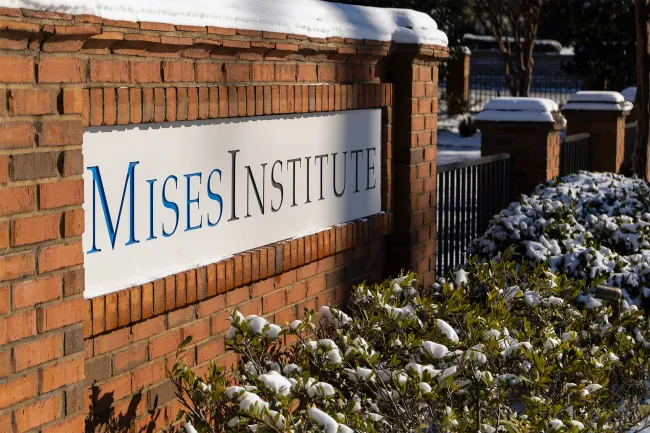Early in the morning of July 13, 2025, the Dragon Bravo Fire on the Grand Canyon’s North Rim consumed the historic 1930s Grand Canyon Lodge, the visitors’ center, and dozens of other structures in the national park. Ignited by lightning on July 4, the Park Service had initially chosen to manage the fire as an opportunity to burn through a buildup of fuel sources on the forest floor, but it escaped control when wind picked up a few days later. No one was hurt, but many are asking how this could happen.
Is this part of a broader problem? Climate activists have contended that wildfires are increasing because of a warming planet, though data on wildfires indicate otherwise. Globally, fire burn area has decreased over the last century, and carbon emissions from fire have also fallen over the last 20 years. Meteorologist Chris Martz has pointed out that the number of acres burned by wildfire in the lower 48 US states has markedly declined since the 1930s. Other data from the last few years do not suggest that wildfires themselves are worsening, although the economic costs do seem to be rising. Just as more people living and building structures on a coast will increase the damage from a hurricane, increased numbers of people living and building in areas affected by wildfire (the wildland-urban interface) will raise the dollar costs of these events.
Whether or not climate change is worsening wildfires, wildfires are clearly still causing many tragic losses of lives and destruction of property. But the devastation is worse than it needs to be. Why?
A Bureaucratic Tinderbox
Government’s bureaucratic land management policies are largely responsible. By reducing the occurrence of low-intensity fires that would normally burn off underbrush and dead trees on the forest floor, government-managed forests can accumulate fuel that turns wildfires into destructive conflagrations. Aggressive fire suppression was the prevailing policy of federal and state governments for more than a century. Though foresters better understand the role of fire than they once did, the poor management decisions from the past will take decades to undo.
Some governments have been particularly slow to act, and they often get in the way of private efforts. In the wake of devastating wildfires in California, it became clear that Gavin Newsom’s administration had done more to hinder wildfire prevention than to promote it. As journalist Steven Greenhut wrote in the Orange County Register in 2025,
[California] clears maybe 125,000 acres of brush from its 19 million acres of forest (plus another 14 million that are federally owned). The state requires multiple lengthy approvals for forest clearing projects and impedes property owners who want to fire-harden their homes.
Private land has fared better, when owners are given freedom to act. In 2021, the Bootleg Fire in Oregon burned more than 400,000 acres. The fire provided a natural experiment in managing forests for fire resilience, as it moved from the Fremont-Winema National Forest to the Nature Conservancy’s Sycan Marsh Preserve. Unlike the Forest Service, the Nature Conservancy had managed their land through thinning and prescribed burns. The wildfire quickly went from 200-foot flames on federal land to a lower-intensity ground fire on the well-managed private land, sparing trees and providing an island of intact forest.
Though government foresters understand the importance of mitigating fire risk, bureaucratic procedures delay the implementation of the necessary projects. According to the Property and Environment Research Center, environmental review processes mandated by the National Environmental Policy Act take an average of 3.6 years for a mechanical treatment (physically removing fuel on the forest floor) and 4.7 years for a prescribed burn. If an environmental impact statement is required, the delay becomes 5.3 years for mechanical treatment and 7.2 years for prescribed burns. Nearly half of all forest restoration projects conducted by the US Forest Service required an Environmental Impact Statement. Years of delay translate into more accumulation of fuel, and greater risks of intense fires that top out into tree-killing wildfires that endanger human lives and property. The US Forest Service recently reported that 63 million acres of the 193 million under their control faced a high or very high risk of wildfire. But in fiscal 2024, only 4 million acres were treated.
Additionally, the Clean Air Act historically treated smoke from prescribed burns differently from smoke from wildfires, counting only smoke from prescribed burns against emissions limits even though wildfire smoke is functionally identical. Ironically, since prescribed burns help prevent the pollution from a catastrophic wildfire, the emissions regulation may have increased total emissions. In Oregon in 2018, 93 percent of unhealthy air quality days were caused by wildfire. Only recently, in March 2025, did the EPA administrator begin revising this rule to reduce the barriers to prescribed burns. State emissions regulations also have restricted prescribed burns, though those too have started to loosen.
Problems of bureaucratic delay and heavy-handed emissions rules are compounded by case law that encourages mismanagement on government land. For decades, the law has inconsistently imposed liability on private landowners when a fire causes damage on neighboring property, while granting immunity to the government under the same circumstances. A 2021 article by attorneys Lawson Fite and David Bechtold explains how this bias toward government came to be. A 1957 Supreme Court case—Rayonier Inc. v. United States, 352 U.S. 315—resulted from a 1951 incident in which a fire spread from US Forest Service land to private land, significantly damaging forest resources. The private owners sued, arguing that the Forest Service had allowed fuel to build up through negligent land management and had then made mistakes when fighting the fire. Lower courts ruled in favor of the Forest Service, but the Supreme Court reversed, saying that the Federal Tort Claims Act (FTCA) required that the US government be liable. However, a 1984 case on the FTCA and subsequent cases gutted the Rayonier precedent by saying that if an agency’s decision is potentially a result of a policy, the government has immunity from tort liability. The result is that if a government agency contributes to a catastrophic wildfire by not thinning, not using prescribed burns, or not adequately fighting a wildfire once it starts, the agency is not responsible for a tort claim. If a private owner causes damage to government land through similar negligence, the government can—and does—litigate aggressively. One 2017 case resulted in a $100 million settlement payment from a private landowner, even though investigative fraud was later discovered.
The Wildfire Calculation Problem
The problems with bureaucracy have long been understood, even if they have not been appreciated by those who look to government to manage land. As Ludwig von Mises showed over a century ago, government intervention displaces the market process and thereby deprives us of reliable cost and benefit information derived from demonstrated human preferences.
By replacing private property with government control, we subject land to mismanagement and destruction. Government bureaucrats have no way to determine the costs inflicted or benefits achieved by fire, whether for the purposes of deciding how much land to treat with a prescribed burn, which acres need to be treated first, or how many resources to devote to fire suppression in the event of a wildfire. Political objectives take over from rational management, as land use is dictated by interest groups and power brokers in government. The best path forward is not to tweak some bureaucratic procedure or increase federal budgets for prescribed burns or replace an official who allowed a fire to get out of control. It is to return land to private ownership.


